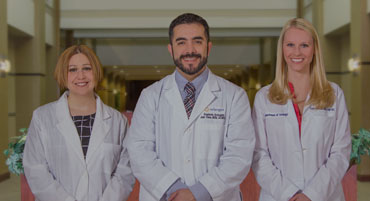Peyronie’s Disease Causes & Treatments in Chattanooga, TN
Treatment Options for Peyronie’s Disease
Treatment options include traction therapy, medical and surgical options.
Does Peyronie’s Disease Require Treatment?

- Penile curvature – if the curve is uncomfortable for you or your loved one to engage in satisfactory intercourse. Treatment is usually indicated if you have a bend >30 degrees, with or without significant narrowing
- ED – if your erection is not good enough for intercourse without medications or if you have unstable erections that cause buckling
- Emotional bother – if the deformity results in significant stress that causes you to avoid intercourse or intimacy
What If My Peyronie’s Disease is Left Untreated?
The course of the disease is based on the phase of the disease you are currently in. There are two phases to PD, the acute phase and the chronic phase. The phases group intervals of time as they relate to the wound healing process.
The acute or early phase is usually the first 18 months after the initial lump appears or injury occurs. This phase is characterized by penile pain, lump and deformity. The deformity/curvature can change over the course of the acute phase.
The chronic or stable phase follows the acute phase and is characterized by the absence of penile pain, and stability of the curvature.
For men choosing to do nothing, 40% will have no change in curvature, 50% will experience worsening of the curvature, and 10% will have improvements in their curvature. The majority, 90% of men, will not experience any improvements in their curvature.
Alternative Treatment Options for Peyronie’s Disease
The only non-medical option for the treatment of PD, besides doing nothing, is the use of a mechanical extender. The mechanical extender works much like braces do. The device places the penis in traction, stretching it for prolonged periods of time. With consistent use you may notice improvements in length, if length has been lost due to PD. Also, some may notice improvements in their curvature. Most importantly, the device must be used at least 3 hours per day to get a real benefit from this from therapy. The traction device can also be used with medical and surgical therapy as it may enhance the benefits from those other treatment options.
Are There Medications For Peyronie’s Disease?
There have been many medications that have been researched in the treatment of Peyronie’s. Unfortunately, the likelihood that medications alone will help or prevent the deformity from Peyronies is low. Medications such as Vitamin E, Pentoxifylline, POTABA, colchicine, L-Arginine, L-Carnitine, tamoxifen and tadalafil have all been used. I personally recommend using pentoxifylline, and L-arginine due to their reduced cost and low side effect profile. L-carnitine can be used if penile injections with verapamil are pursued.
I have a significant curve and Peyronie’s is bothersome. What can I do in the acute phase?
Along with medication and mechanical traction, penile injections into the plaque can lead to significant improvements in curvature and lessened penile pain with erections. Verapamil, a medication originally used treat high blood pressure, can help penile deformity when injected into the plaque. This is usually done in the urologist’s office, after the penis is numbed with an anesthetic. The verapamil is injected directly into the plaque and it stabilizes the plaque preventing future curvature and allowing the curve to improve as well. About half of men undergoing the treatment will notice improvement of their curvature and usually all will have their penile pain subside. Injections are performed once every two weeks over a three month period and may be repeated if the need for more improvement exists.
My curve has been stable for several months. I have good erections, but it still bothers me. What are my options now?
Once the curvature has been stable for several months, and it has been at least a year since the curve developed, you should be in the chronic phases of the disease. This is the time when procedures aimed at correcting the curvature become an option.
If you have significant curvature, and minimal or no ED, you may be a candidate for a penile plication. A penile plication is an outpatient surgical procedure performed under a general anesthetic. An incision is made through your existing circumcision scar or along the bottom of your shaft if you are uncircumcised. Sutures are placed on the opposite side of the curvature and the tissue is basically crimped together. This shortens one side of the penis efficiently straightening the curvature. Most men do not experience any significant penile length loss. Side effects include temporary pain with erections, perception of length loss, change of skin sensation near the incision, penile swelling, unstable erections, recurrence of curvature, urethral injury and possibility of wound infection. The aim is to correct the curvature to less than 20 degrees. Penile placation is successful in men with severe degrees of curvature so long as there is no significant narrowing of the penis.
If the curvature is severe, >60 degrees, there is significant narrowing, and little or no ED is present, a penile grafting procedure may be performed. During this outpatient procedure, under a general anesthetic, an incision is placed through the previous circumcision scar. Again the erectile bodies are exposed and the nerves and urethra are placed out of harms’ way. The Peyronie’s plaque is excised effectively lengthening the penis and correcting the curvature. A non-immunogenic graft is then sewn into place where the plaque was removed to replace the inelastic scar with flexible tissue. The same side effects of penile plication exist, with the addition of causing ED which can occur in up to 1/4 of patients undergoing this procedure.
I Do Not Want to Undergo any Procedures for Peyronie’s Disease, what are my options?
Recently, the FDA approved Xiaflex, which like verapamil can be injected directly in to the plaque to improve curvature. This medication is only approved for use in the chronic phase of the disease, when the plaque can be felt on exam and for curvature greater than 30 degrees. This is injected in the office twice over the course of several days, for four monthly treatment cycles. After each injection cycle you will be taught how to stretch “mold” the plaque to aid with improvement. Common side effects include pain and significant bruising. There is a rare occurrence of penile fracture occurring in less than 1% of men undergoing treatment.
I have ED that doesn’t respond well to medications, and when I do have an erection my curve is very bothersome. What are my options now?
Correcting your curve will not affect your ED. Peyronie’s treatments will include therapies to improve your erection, as well as your curve. For the men who have ED and do not respond well to oral pills like Viagra, or Cialis, surgical options are available. At this point a penile prosthesis can be placed to correct the ED, and simultaneously your curvature can be corrected either with bending, penile plication or plaque excision and grafting, depending on the severity of your curve. The goal of any procedure is to aid in returning you to normal sexual function. Dr. Shridharani will assist you in developing an individualized plan that work for you to get you the best result possible.
Patient Testimonial
I would highly recommend Dr. Shridharani to anyone. I was referred to him by another doctor in his field because of the complicated nature of my case, and was told that Dr Shridharani was the best physician to address my surgical needs. From the first time I met him, he was very thorough and very patient with me. He spent as much time as I needed to answer my questions and explain all of my options. I am very pleased with my outcome and thankful there is a specialist of his caliber here in town. It is nice in todays world of “quick” medicine to find someone who takes the time to address your concerns and needs.
Read More Testimonials
Choose Dr. Shridharani for Management of Peyronie’s Disease
Millions of men suffer with PD. Many of these men will not discuss these issues with their care providers out of embarrassment, a sense of helplessness or fear of unknown treatments. Peyronie’s disease is undeniably a treatable condition. Dr. Shridharani has advanced urological training in the management of Peyronie’s Disease, and his clinic is devoted to Men’s Health. We provide a comfortable, private setting where your quality of life issues will be managed at your pace. Our mission is to help you regain full sexual function and intimacy with your loved one.
Schedule a Consultation For Peyronie’s Disease Treatment in TN
Contact Us!
Men’s Health & Microsurgery offers urology services in Chattanooga,TN. Call us today at (423) 778-4636 to schedule an appointment.


